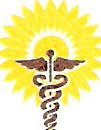1.What causes pulmonary embolism and how serious is it? Pulmonary embolism (PE) occurs when a blood clot lodges in the lungs and is a potentially life-threatening situation. Generally the clot forms initially in the legs or arms. This condition is called DVT or deep vein thrombosis. The clot then can travel through the bloodstream to the lungs. According to the Centers for Disease Control, up to 200,000 Americans suffer pulmonary embolism (PE) each year, and nearly one-third of them die.
2.Who is at risk? There are some people or activities that increase the risk of PE. Sitting for prolonged periods in a car or airplane slows blood flow in the legs,increasing the risk for clot formation. Many cases of DVT/PE have been reported after long flights or car trips. Other risk factors include immobilization after surgery or illnesses that leaves the person confined to bed.Obesity,heart disease,cancer, smoking and injury to the legs,smoking and the use of birth control pills or estrogen are also risk factors.
3. What symptoms does pulmonary embolism cause? Warning signs vary but among the more common are chest pain (which worsens during a deep breath), shortness of breath, dizziness or coughing up blood. Some people have anxiety and a 'sense of doom'.
4.How is it diagnosed? Clinical examinations,ultrasound of the legs, CT scan angiogram of the chest and a blood test called D-dimer are used to diagnose this. Contact your physician immediately.
5.How is it treated ? People with PE are treated with oxygen and blood thinners.A few require clot dissolving agents called thrombolytics. In bigger medical centers, surgery can be performed to treat the clot.In high risk patients a filter is placed in a large blood vessel called an IVC filter. ( Inferior Vena Cava is a major vein through which the clot can travel to the lungs.)
6.What can be done to prevent PE? On long trips, stop and stretch your legs every few hours with a short walk to help prevent clot formation. Standing on your toes and pumping your calves is a good exercise and can even be done on long flights. Avoid prolonged bed rest after surgery or injury and discuss blood clot prevention with your doctor. Resuming physical activity soon is very important. Any unexplained leg pain or swelling should be brought to the attention of your doctor. A simple ultrasound of the leg can rule out a blood clot there. There is also a blood test called D-Dimer which,if positive, can point to the possibility of a blood clot.
If you have any questions,please contact us at 845-246-WELL



